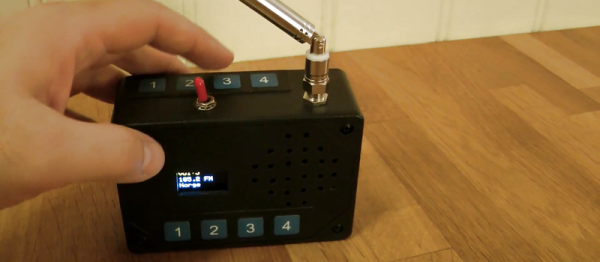Back in the day, building a DIY radio was fun! We only had to get our hands at a germanium diode, make some coils, and with a resistor and long wire as an antenna maybe we could get some sound out of those old white earplugs. That was back then. Now we have things like the Si4703 FM tuner chip that can tune in FM radio in the 76–108 MHz range, comes with integrated AGC and AFC, controlled by I2C, as well as a bunch of other acronyms which seem to make the whole DIY radio-building process outdated. The challenges of the past resulted in the proven solutions of the present in which we build upon.
This little project by [Patrick Müller] is a modern radio DIY tutorial. With an Arduino Nano as the brains and controller for an Si4703 breakout board, he builds a completely functional and portable FM radio. A small OLED display lets the user see audio volume, frequency, selected station and still has space left to show the current available battery voltage. It has volume control, radio station seek, and four buttons that allows quick access to memorized stations. The source code shows how it is possible to control the Si4703 FM tuner chip to suit your needs.
As for ICs, not everything is new, [Patrick] still used the good old LM386 amp to drive the speaker, which is almost 35 years old by now. As we can listen in the demo video, it can still output some seriously loud music sounds!










